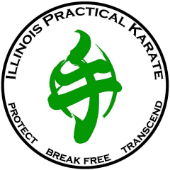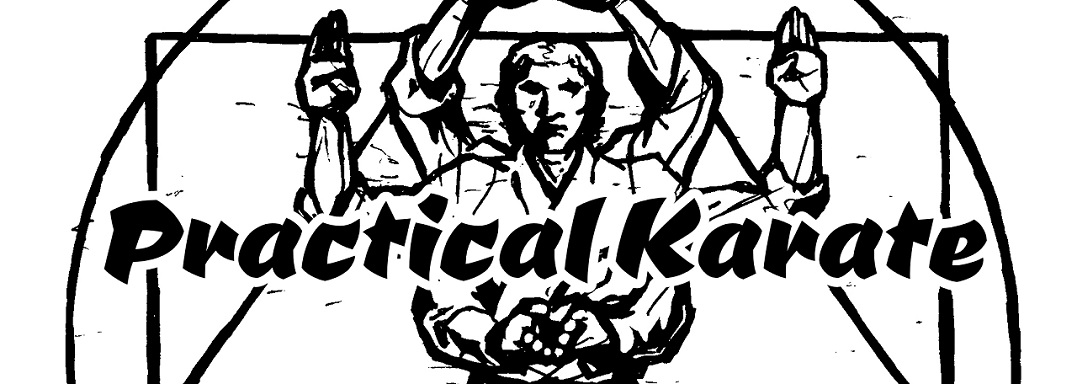-
Posts
2,825 -
Joined
-
Last visited
Everything posted by Wastelander
-
Not exactly. Back when I was a green belt, I cut my old white belt into pieces that I distributed to a group of kids at an inner city school I did a demonstration at, as sort of keepsakes. At this point, the only belts I still have are the white belt I still use when I train at other people's schools, my Judo green belt, my Shuri-Ryu brown belt, my old Shorin-Ryu brown belt, my current black belt, and my "formal" black belt that my Sensei gifted me (new) when I was promoted to Shodan. Since I only fairly recently went independent, and the pandemic put a pause on really starting up my dojo, I haven't had the opportunity to train someone up to a belt rank I could pass on the belt for. I suspect I will pass on my brown belt, someday. The formal black belt has sentimental value to me, since my Sensei has passed on, but I may pass on my regular black belt, someday.
-
Welcome to the forum!
-

Striking target for strengthening
Wastelander replied to Bobfromtekken's topic in Equipment and Gear
What you're describing would be akin to an ude-makiwara, but without any spring action. You can use it for conditioning, if you're careful, but it's not really a makiwara. A better bet would be to build a proper makiwara on a platform, that way it's moveable and not permanently bolted to the floor or anything. -

beginning move of Kanku dai (hand triangle) occult symbol?
Wastelander replied to Journyman74's topic in Karate
The triangular shape is the result of making a wedge shape with your hands/arms. That's it. Some styles like to attribute poetic meanings to "unusual" movements or postures in kata, and this one is frequently related to "looking to the sky," or "scanning the heavens," but those are relatively new interpretations. Karate doesn't have any more "hidden dark ties" than any other martial art that was developed for self-defense and law enforcement--that is to say, just the "hidden dark ties" that specific practitioners might have as individuals. A good number of Kyokushin practitioners, for example, were known Yakuza, but it makes sense that a rough-and-tumble fighting style will attract such people to it. -
Welcome to the forum!
-
Many thanks, Alex!
-
My Sensei encouraged students to take advantage of seminars, regardless of style. Active cross-training in another art he encouraged once students reached brown belt--before that, you tend to have students blending things too much, too soon, and they don't make very good progress in either art. The organization didn't care, unless you were visiting Okinawa, and then all training outside of the organization honbu dojo was forbidden.
-

KarateForums.com Awards 2020: Winners Revealed!
Wastelander replied to Patrick's topic in KarateForums.com Announcements
Thank you to everyone who voted, and congratulations to everyone who won! -
That sort of thing happens FREQUENTLY in traditional martial arts after a major figure in the style passes away. Maybe they were the founder of the style, or the head of the organization, or the son of somebody notable, but when they die, it's pretty much inevitable. Everyone wants to stand on the shoulders of that major figure, and they believe there is only room for one person to do that, so they have to discredit others and make themselves out to be the "most righteous successor," so to speak.
-

Wastelander is Getting Married!
Wastelander replied to Patrick's topic in KarateForums.com Announcements
Thank you so much, everyone! -
Well, the Shorinkan has 10 dan ranks, although I'm not with the organization anymore. The Bugeikan doesn't have dan ranks for KishimotoDi, at all--just a Shihan license you can test for, eventually. For my own school, once COVID settles down, I think I'm going to get rid of the multiple levels of yudansha, entirely. The closest I would have is a "curriculum black belt" and an "instructor black belt."
-
Welcome to the forum!
-
Welcome to the forum!
-
Well, before some personal setbacks and COVID, while I was prepping to open my own dojo, I had set up a structure where my childrens' ranks were completely separate from the adult ones. This is an idea that I shamelessly stole from BJJ, lol. I figured there was no sense in trying to have kids and adults learn the exact same curriculum in the exact same way/order and just breaking the belts into pieces, although that is what my previous instructors did. I liked the idea of setting up a youth program that had its own curriculum, which would build up to where they could join the adult program sometime in their teens and be well prepared to do so.
-
With regard specifically to your point about the kicks in Chinto, and people in the same lineage doing it differently, I can give a direct answer; they are the same thing being done with different emphasis, and since it appears in Kusanku, as well, you can do it one way in one kata, and the other way in the other kata. By that, I mean that a jumping front kick IS two front kicks, more or less, because you get the momentum for the jump by starting to throw the kick on one side, and then continuing with the other. Practicing both gives you more options, and more food for thought in your application. Nakazato Shugoro (another senior student of Chibana) said that in Chinto we double-kick, because in Kusanku we jump-kick, and that way we practice both variations.
-
I always refer people to Matt's article on topics like this, and Wado Heretic's breakdown is good. I will add that Tachimura no Passai would be considered a contemporary to the Matsumura/Oyadomari versions of Passai, given that it was passed down by a contemporary of Matsumura Sokon, but while I have learned the kata, it is not publicly available to watch and compare. It's quite similar on some ways, but has some unique variations to it, and its softer nature does fit more in-line with both Chinese arts and Udundi, so I would tend to think it's a bit more true to its roots than the other versions, but that's an opinion, not a fact.
-
Welcome to the forum!
-

Pros and cons of closed hand strikes vs. open hand strikes?
Wastelander replied to avatarrules123's topic in Karate
It depends on the context and which open hand strikes you're comparing to which closed hand strikes, but there are definitely pros and cons to each. Consider a simple punch vs. palm heel example: The punch has several inches of reach advantage over the palm heel, and makes contact with small, bony surfaces that can cause a lot of damage, BUT the small bones of the hand are prone to breaking if they make contact with a harder surface or at a bad angle, and the wrist can be prone to injury if it can't withstand the strain of the impact, and for those reasons it is more difficult to learn to punch correctly. The palm heel takes the small bones of the hand and the complex joint of the wrist out of the equation, meaning that you can now strike with more power than you might have with the punch, without having to worry so much about injury, but you have lost several inches of reach and are now hitting with a larger, softer surface that will do less damage to the target, although this is easier to learn how to use properly. This starts to change when you compare other strikes, like shuto-uchi vs. tetsui-uchi, for example, and you have to weigh the pros and cons based on what your intent is with them. Competition fighting often benefits significantly from a reach advantage, for example, where self defense benefits less. -
Many thanks for all of your years of dedication, Devin!
-
According to the WKF judging class I took some years ago, the throws are not allowed to lift both of the opponent's feet off the floor (other than sweeping someone who is kicking), because it makes the throw "dangerous." The problem I found with this, in practice, is that people proceeded to do hip throws incorrectly, making them more dangerous, rather than less dangerous.
-
I'll be honest; I have no idea what your Sensei means by that statement, so I'm also not sure how it would apply to the ADA. I mean, you use stances throughout karate, regardless of where you practice it or use it. Someone in a wheelchair, for instance, would have a "stance," but it would be the stance of their wheelchair, rather than their legs. And are we actually talking about "stances" or are we talking about "postures," or about more generally moving bodyweight?
-

Makiwara: what do you use for padding?
Wastelander replied to username19853's topic in Equipment and Gear
I have both a rope bundle pad and a leather pad, and I can slip a piece of floor mat into a pocket in the leather pad for when my knuckles are sore. They each have a different feel. -
Welcome to the forum!
-

If you won the lottery....
Wastelander replied to cheesefrysamurai's topic in General Martial Arts Discussion
Well, it would certainly make starting my own dojo MUCH easier, once the pandemic subsides. I could actually buy my own space, instead of renting, which would be awesome! Not to mention all the equipment I could buy outright, brand new. -
Personally, I have found that people who have an interest in developing a well-rounded skill set should be engaging in a variety of sparring methods. As with ALL training methods, there are different pros and cons to each, and all of them compromise something, so by using different methods, you can get overlap that makes up for what would otherwise be gaps caused by those compromises. That said, I certainly have methods I like better than others. My favorite is probably kakedameshi, which is close range sparring where you maintain contact with your opponent's limbs at all time, and focuses on tactile sensitivity, muchimidi, and limb control. It's an excellent sparring method for working your kata applications against resistance, and because of the close range, you can adjust the contact level of the strikes as necessary. My second favorite is MMA-style sparring, with more open rules to allow for some more "dirty" methods--still done with enough control to be safe, of course.


